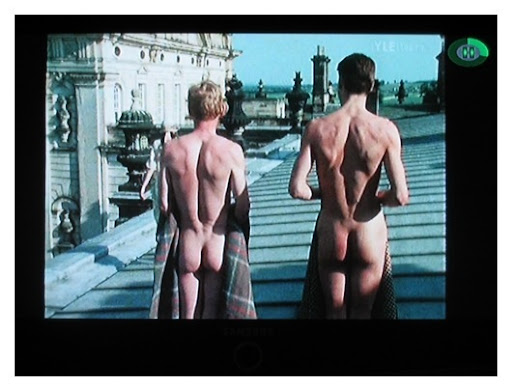First, you write a short summary of what you read. Then you pick from the summary to write 5-6 rhyming couplets about the piece.
Robin challenged me to do a shrinklet of a book. First I chose Dr. Seuss's The Cat in the Hat, a favorite of mine that I have memorized visually and textually. Here it is:
The Cat in the Hat
Shrinklet
The Summary
In The Cat in
the Hat, a strange visitor enters the lives of two bored children who live
in an ordinary house in an ordinary town. The Cat breaks all the rules the
children have learned, leaving them both horrified and marvelously entertained.
His cleanup crew, Thing 1 and Thing 2, take care of the mess with zany energy
and machinery, just before mom gets home. Everything is as it was, except
perhaps the imaginations of the children. Growth doesn’t come through sameness.
The Shrinklet
Ordinary house, ordinary town,
Ordinary kids, feeling a bit down.
In comes the Cat, the Cat in the Hat
He make dizzying disorder—how about that!
Mom’s on her way home, what will we do?
Cat has the answer, Thing 1 and Thing 2.
All is now clean, well-ordered, the same,
No sign at all that Cat in the Hat came.
But chaos once loosed set the kids free—
But we won’t tell Mom, we won’t, will we?
Tidy and ordinary is more than a bit of a bore.
Now that we know there’s so much-much-much more.
Robin liked it, but we both thought Seuss was a bit too easy, so to explore the shrinklet further, I did Austen's Pride and Prejudice, which I've read as many times as The Cat in the Hat. I realize the key feature I forgot to use was the absolute beauty of Austen's grammar and punctuation. I'll try to add a couplet about that.
Pride and Prejudice
Shrinklet
| He emerges from the pond and thereafter she admires his "house." |
The Summary
Elizabeth Bennett and Mr. D’Arcy. Jane Bingley and Mr.
Bingley. Lydia and Wickham. A tangled skein of misunderstandings,
cross-purposes, lies believed to be truths, truths believed to be lies. And
that terrible Mr. Collins. A cast of memorable characters well drawn. All
around the getting of husbands and the traps and lures attendant thereupon.
Jane Austen has the most superb punctuation and grammar of any author; it’s
like reading art. Balls and stiff formality. Singing at the piano. I have read
this book at least 10 times and continue to love it. The tension of wondering
whether Elizabeth and D’Arcy would ever both be ready to love each other at the
same time pulls the reader through. Oh, and that memorable scene when Elizabeth
sees D’Arcy emerge from swimming the pond, his clothes all plastered to his
well-formed body…and she then starts to compliment his marvelous "house."
The Shrinklet
The class struggle imperils the romance,
Leading D’Arcy and Elizabeth a slow dance.
But after D’Arcy emerges magnificently from the pond
Elizabeth admires his "house," which goes far beyond
The love-sickliness of Bingley and Jane
And the calculations of Lydia, so vain.
Pride and prejudice both must give way
For true love to blossom and triumph o’er the day.
Hearts and minds in balance—it’s this
That guarantees Lizzie’s matrimonial bliss.
[added couplet]
Reading Austen is absolutely no chore.
Her grammar and punctuation are really top drawer.

